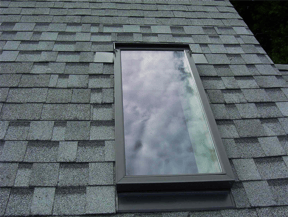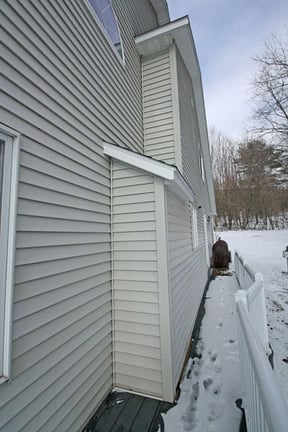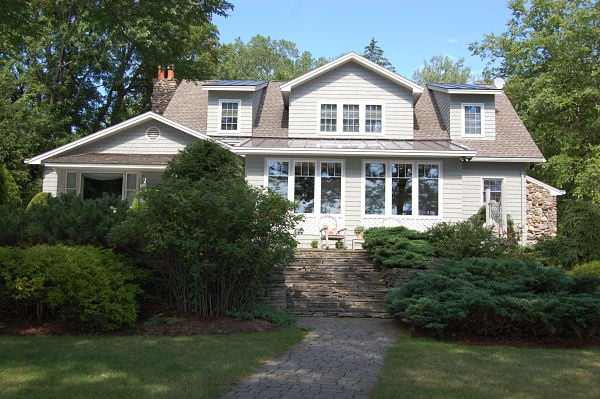The past five months have produced one of the coldest winters on record in Central New York. With the start of spring, now is the time to inspect your home for winter damage, both inside and out. Our “Spring Home Maintenance Tips” is a guide on what to check for in and around your home. If you suspect a problem or are unsure if you have a problem, we recommend contacting a professional contractor.

Outside Maintenance:
1. Check your roof for damage or have a professional look at it.
Damaged shingles and flashing can cause leaks. Spotting problems early will help lower the cost of repair. See our blog article “Inspect Your Roof and Repair Winter Damage.”

2. Inspect your deck.
Decks should be inspected annually. Follow our 7-Point Deck Safety Inspection Checklist to know what to look for. Also, consider having your deck inspected by a professional who can evaluate the deck’s structure.
3. Check windows and trim for deterioration and rot.
Wood sills and sashes take abuse from the weather and are susceptible to rot. There has been a lot of ice build-up this winter due to the prolonged cold and conditions may be conducive to mold or rot.
4. Check storm doors and screens on doors and windows.
Storm doors often are damaged by the strong winds we experience during Central New York winters. Make sure that your screens don’t have holes that allow insects into your home as the weather warms up.
5. Check your home’s foundation for signs of cracks or movement.
Small cracks can usually be filled with a concrete crack filler or silicone caulk. Large cracks should be inspected by a professional.
6. Check siding for cracks and areas of water seepage.
Cedar siding tends to crack after exposure to the elements over time. Vinyl siding becomes brittle in cold temperatures and may have been damaged over the winter. Cracked or damaged siding should be replaced.
7. Check siding for mold and mildew.
Siding may need to be cleaned and/or painted.

8. Check steps, driveways and sidewalks for cracks and uneven areas.
These areas can be tripping hazards and you’ll want to have them repaired as soon as you discover a problem.
9. Check outside faucets to be sure they are working.
Look for leaks and drips that will waste water and may impact the foundation walls over time if left unattended.
10. Inspect outside electrical outlets.
Worn receptacles should be replaced. Outlets and switches should be checked to be sure that they work properly. If they do not work, an electrician should be brought in to assess and fix the problem.
11. Check your air conditioning system.
Clear out any leaves or debris that may be blocking the condensing unit screen. Check the condensate hose to be sure it’s not blocked by algae. Listen for any unusual sounds. Have your system inspected and serviced by a professional air conditioning contractor as recommended by the manufacturer of your unit.
12. Clean clothes dryer exhaust duct, damper and space under the dryer.
Lint build up in these areas can cause a fire. With all the snow we’ve had and near zero temperatures, the vent to the outside may be jammed with lint if you were unable to clean it.
Inside Your Home:
1. Check ceilings for leaks and cracks.
Snow loads and ice on the roof can damage shingles and cause water to seep into the home. Look inside closets too, especially if they are located just under roofing. Expansion and contraction of building materials due to temperature and humidity fluctuations during winter months can also contribute to cracks in ceilings. It’s important to determine the cause of cracks, especially if moisture or inadequate insulation is the problem.
2. Clean the kitchen exhaust hood and air filter.
Clean cooking grease off of surfaces and filters. Use a de-greaser. Metal mesh filters can be cleaned in the dishwasher.

3. Check sump pumps and drains to be sure they are working properly.
Spring rains can cause flooding. Be prepared.
4. Check the water heater.
Inspect the base of your water heater for evidence of leaks or rusting at the bottom. If rust is found, the water heater should be replaced.
5. Inspect and clean dust from the covers of your smoke detectors and carbon monoxide alarms.
If you didn’t replace your batteries over the “daylight savings time” weekend in March, now is the time to do so.
6. Replace your furnace filter.
Filters should be checked once monthly and replaced as needed. Some filters are reusable and can be taken out, cleaned with a hose and put back in place. A dirty filter can reduce the efficiency of your furnace.
Editor’s note: This post was originally published on April 6, 2011 and has been updated to provide new or additional information.





